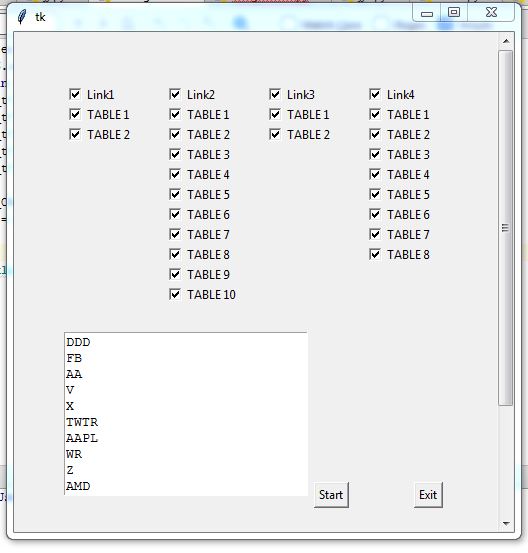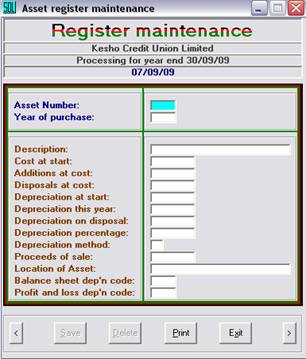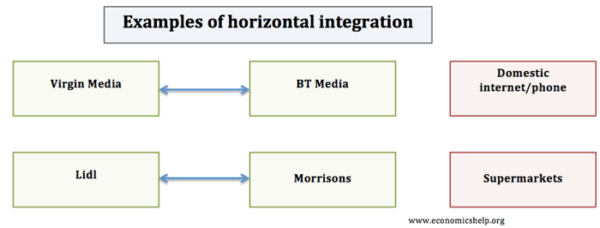

Operating ExpensesOperating expense is the cost incurred in the normal course of business and does not include expenses directly related to product manufacturing or service delivery. Therefore, they are readily available in the income statement and help to determine the net profit. Companies whose revenue is based on subscriptions, longer-term contracts, or retainers often have negative working capital because their revenue balances are often deferred. The formula for calculating this ratio is by dividing the company’s sales by the company’s working capital. Below is a short video explaining how the operating activities of a business impact the working capital accounts, which are then used to determine a company’s NWC. Populate the schedule with historical data, either by referencing the corresponding data in thebalance sheetor by inputting hardcoded data into the net working capital schedule.
This is because you want your customers to clear their invoices on time. Therefore, you need to check the credit score of your customers before entering into any sort of agreement with them. Excessive Net Working Capital points out slack in the debt-collection period and loose credit policy of your business. Your business must maintain a sound Net Working Capital to run its business operations. Both excessive and inadequate Net Working Capital positions impact your business. However, a high Net Working Capital Ratio does not mandatorily mean that your business is efficient in managing its short-term finances.
Working capital and some key financial ratios to improve your outcomes and your business’s short-term financial health. Read more to explore what working capital is, its formula, and helpful management tips. Working capital, or net working capital , is a measure of a company’s liquidity, operational efficiency, and short-term financial health.
Calculating your working capital is a quick way to gain an overview of your business’ cash flow. At the very top of the working capital schedule, reference sales and cost of goods sold from theincome statementfor all relevant periods. These will be used later to calculate drivers to forecast the working capital accounts. Negative working capital is never a sign that a company is doing well, but it also doesn’t mean that the company is failing either.
Working capital ratio
The inventory turnover ratio is an indicator of how efficiently a company manages inventory to meet demand. Tracking this number helps companies ensure they have enough inventory on hand while avoiding tying up too much cash in inventory that sits unsold. Working capital includes only current assets, which have a high degree of liquidity — they can be converted into cash relatively quickly. Fixed assets are not included in working capital because they are illiquid; that is, they cannot be easily converted to cash. Many businesses experience some seasonality in sales, selling more during some months than others, for example.
- A business should strive to increase credit sales while also minimizing accounts receivable.
- Working capital ratio involves a company’s current assets and current liabilities, but it divides one over the other to get a percentage or ratio.
- Liquidity is factored into working capital, as it also considers the total amount of current assets in its equation.
- Other examples include current assets of discontinued operations and interest payable.
- Working capital turnover is a ratio that measures how efficiently a company is using its working capital to support sales and growth.
- Working capital is calculated from current assets and current liabilities reported on a company’s balance sheet.
If a company is fully operating, it’s likely that several—if not most—current asset and current liability accounts will change. Therefore, by the time financial information is accumulated, it’s likely that the working capital position of the company has already changed. In the corporate finance world, “current” refers to a time period of one year or less. Current assets are available within 12 months; current liabilities are due within 12 months. A company has negative working if its ratio of current assets to liabilities is less than one .
What is the Current Ratio?
A good working capital ratio is considered to be between 1.5 and 2, and suggests a company is on solid ground. This shows that the company is in a position to pay its creditors and foot its bills within one year. Because here we will include the revenues for a specific period, it is essential to get the change in working capital rather than an instant picture like the information shown in the balance sheet. A good rule of thumb is that a net working capital ratio of 1.5 to 2.0 is considered optimal and shows your business is better able to pay off its current liabilities. To adequately interpret a financial ratio, a business should have comparative data from previous time periods of operation or from its industry. Another possible reason for a poor ratio result is when a business is self-funding a major capital investment.
What Does High Working Capital Say About A Company? – Investopedia
What Does High Working Capital Say About A Company?.
Posted: Sat, 25 Mar 2017 00:41:52 GMT [source]
A shorter operating cycle combined with trade credit insurancecan be a less expensive option. Current liabilities include all the financial/operating debt that the business has. It can be interest-bearing debt such as the current portion of the long-term debt or non-interest bearing like accounts payable .
Operating working capital formula
J.B. Maverick is an active trader, commodity futures broker, and stock market analyst 17+ years of experience, in addition to 10+ years of experience as a finance writer and book editor. The answer may be counterintuitive, because a negative change indicates that Current Assets are increasing more than Current Liabilities. Conversely, a positive change indicates that Current Liabilities are outpacing Current Assets. The working capital for Hindalco for the two respective periods is 9634 and 9006. The below snapshot depicts the variables used to calculate this ratio. For the calculation of working capital, the denominator is the working capital.
The transmission and effectiveness of macroprudential policies for … – European Central Bank
The transmission and effectiveness of macroprudential policies for ….
Posted: Mon, 10 Oct 2022 08:08:33 GMT [source]
Current liabilities include accounts payable, wages, taxes payable, and the current portion of long-term debt that’s due within one year. Working capital is the difference between a company’s current assets and current liabilities. It is a financial measure, which calculates whether a company has enough liquid assets to pay its bills that will be due within a year. Working capital ratio involves a company’s current assets and current liabilities, but it divides one over the other to get a percentage or ratio. This gives a proportion to assets over liabilities that can help to determine if a company has enough cash or short-term assets on hand to fulfill obligations and general operations. Businesses need money to continue running in both the short and long term.
When a company has excess current assets, that amount can then be used to spend on its day-to-day operations. A company can increase its working capital by selling more of its products. The working capital requirement of your business is the money you need to cover this time delay, and theamount of working capital requiredwill vary depending on your business and its needs. Operating Cycle is nothing but the time duration you need to convert sales into cash once your resources are converted into inventories.
Figuring out a good working capital project accounting and then keeping an eye on your company’s cash flowcan help you understand when a shortfall lies ahead so you can take the necessary steps to maintain liquidity. Knowing how to improve your working capital ratio will give you the resources you need to take advantage of new business opportunities. A lower/or decreasing working capital ratio shows that the company is having a shortage of cash and is unable to pay its creditors on time, This may lead to an increase in short-term loans for the company. Since the ratio is lower as current liabilities are more so the company has to borrow more funds to run the day-to-day business of the company.
What is the Working Capital Ratio?
There are three important ways in which your current asset management differs from fixed assets management. If you implement these changes, you’ll convert current assets into cash much faster. Increasing working capital requires a focus on current assets, which are easier to change than current liabilities. Current assets subtracted by current liabilities, and every business needs to maintain a ratio of at least 1.0. For example, if a company has $800,000 of current assets and has $1,000,000 of current liabilities, its working capital ratio is 0.80. If a company has $800,000 of current assets and has $800,000 of current liabilities, its working capital ratio is exactly 1.
Therefore, the company could become insolvent in the near future unless it raises additional capital to support that growth. When that happens, the market for the inventory has priced it lower than the inventory’s initial purchase value as recorded in a company’s books. To reflect current market conditions and use the lower of cost and market method, a company marks the inventory down, resulting in a loss of value in working capital.
Working capital in financial modeling
Forecast your cash inflows from sales and your required cash outflows by month. Each month’s beginning cash balance plus cash inflows, minus cash outflows equals your ending cash balance. If you can increase sales and minimize inventory levels, the ratio will increase. Increasing the ratio means that you are making more sales without having to increase the inventory balance at the same rate. Time is just as important as dollars, and businesses that can convert a sale into cash faster than the competition are better off financially. If you’re a plumber, your truck and the equipment you use are defined as assets.

Business Class Are you looking for the latest trends and insights to fuel your business strategy? Full BioAmy is an ACA and the CEO and founder of OnPoint Learning, a financial training company delivering training to financial professionals. She has nearly two decades of experience in the financial industry and as a financial instructor for industry professionals and individuals.

The Net Working Capital https://1investing.in/ and the Working Capital Ratio Formula are the easiest ways to determine whether your business has the cash flow necessary to meet your debt and operational demands over the next year. To be considered “current”, these liabilities and assets must be expected to be paid or accessible within one year . However, such comparisons are meaningless when working capital turns negative because the working capital turnover ratio then also turns negative. A company with a ratio of less than 1 is considered risky by investors and creditors since it demonstrates that the company may not be able to cover its debts, if needed. Current assets are assets that a company can easily turn into cash within one year or one business cycle, whichever is less.
Other financial ratios shall also be considered for reaching a meaningful conclusion; otherwise, the conclusion arrived might not be accurate. Financial RatioFinancial ratios are indications of a company’s financial performance. If you have a positive cash flow, your liquid assets are increasing, letting you pay your debts and expenses, invest in growth, or help cushion against future challenges. However, a positive answer could also indicate too much inventory or too limited growth.
